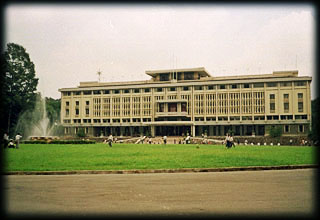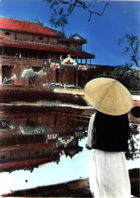



![]()
![]()
SAIGON --- Surprisingly, the government doesn't seem to mind the use of "Saigon" in the names of shops and hotels in this former capital of South Vietnam. Hanoi imposed the name of the city's bitterest enemy on the city itself, but must have realized that it would be counterproductive to truly squash the unabashedly entrepreneurial and yes, capitalistic spirit that still pervades this city. It remains the economic capital, and it's booming, with new hotels and businesses opening daily. The city (pop. 3,169,000) looks quite different than it did during the war, but old landmarks are still there: The basilica, the Rex Hotel, the French-built governor's palace (now home to the City People's Committee) and the blocks of colonial houses haven't really changed. We like simply to wander in the streets of this frenetic city, amid the thousands of stalls selling everything from coconuts to VCRs. As far as the markets go, Cho Binh and Cho Ben Thanh are the most interesting, but if time permits, also see the floating market on the Rach Ben Nghe River and, if you can't sleep, the 24- hour vegetable market on Nguyen Trai Street or the all-night Chuong Duong fish market. For the city's highest-quality wares (antiques and other souvenirs), visit Dong Khoi Street.

Size: Approximately 331,688 square kilometers.
Topography: Hills and densely forested mountains, with level and covering no more than 20 percent. Mountains account for 40 percent, hills 40 percent, and forests 75 percent. North consists of highlands and the Red Rive Delta; south divided into coastal lowlands, Giai Truong Son (central mountains) with high plateaus, and Mekong River Delta.
Climate: Tropical and monsoonal; humidity averages 84 percent throughout year. Annual rainfall ranges from 120 to 300 centimeters, and annual temperatures vary between 5*C and 37*C.
Population: 64,411,668
(1989 census); 2.1 percent average annual population growth rate.
Nineteen percent urban; 81 percent rural. Population centers Hanoi
and Saigon.
